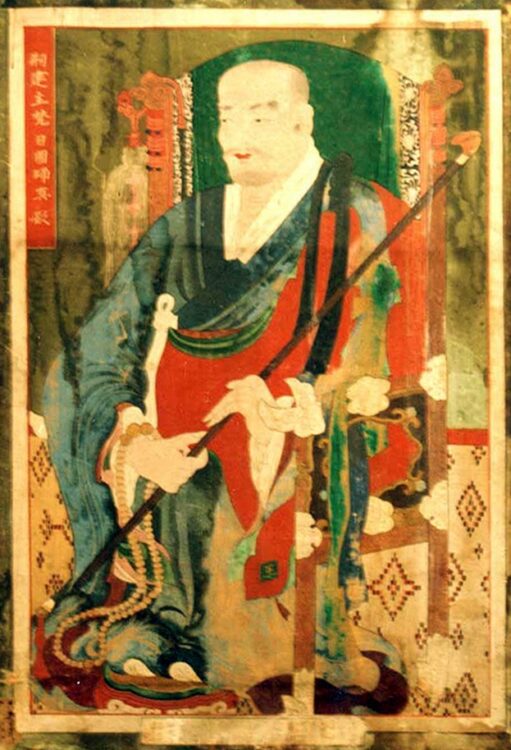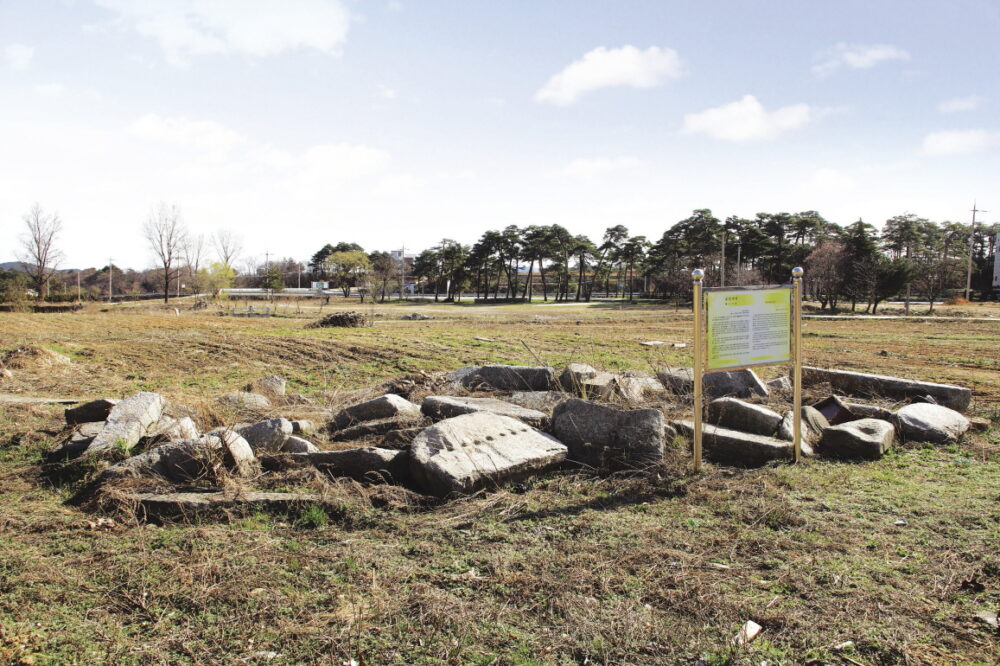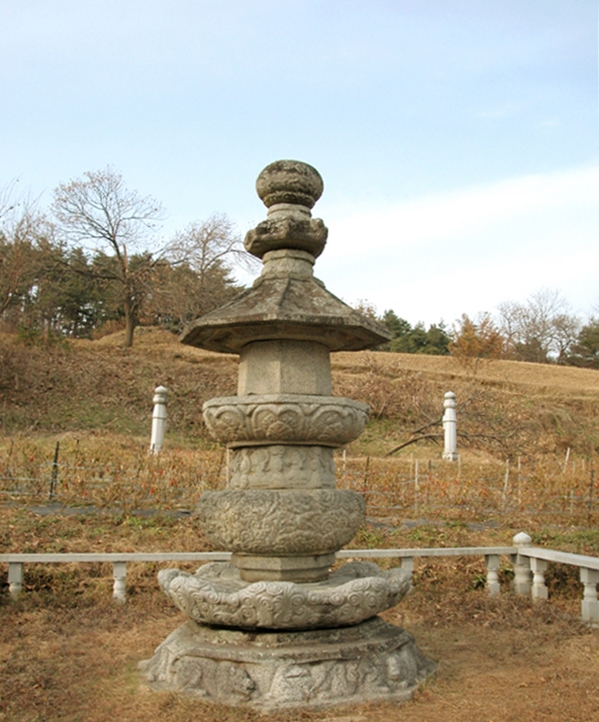Sagulsan Sect – Gulsansa-ji Temple Site (Gangneung, Gangwon-do)

The Sagulsan sect was founded by National Preceptor Beomil (810-889 A.D.) during the reign of King Munseong of Silla (r. 839-857 A.D.). At the time of the Nine Mountain Schools of Seon, the Sagulsan sect, which was located out of Gulsansa Temple in Gangneung, Gangwon-do, was the most prosperous of the nine. Beomil was also known as Pumil, and he received the posthumous title of Tonghyo.
Beomil’s family name was Kim, and his mother belonged to the Ji clan. He was born in 810 A.D. after his mother was pregnant for an astounding thirteen months. When he was born, he was said to have a conch-tuft on top of his head and a pearl on his forehead just like the god Brahma. At the age of fifteen, Beomil left to become a monk. He took his precepts four years later in 829 A.D.
In 831 A.D., Beomil traveled to Tang China (618–690, 705–907 A.D.), where he received the Mind Seal from the Chan Master Yanguan Qian (750-824 A.D.). Afterwards, Beomil traveled on to Mt. Yao. He also visited other famous sites, where he first encountered the persecution of Buddhists under the reign of Emperor Wuzong of Tang (r. 841-846 A.D.). As a result, Beomil hid because Buddhist monks were being executed and temples were being destroyed. However, and according to legend, Beomil was unable to find a place to hide. Eventually, and through the assistance of a Sanshin (Mountain Spirit), Beomil found a place to hide on Mt. Shang. Eventually, he traveled to Mt. Caoxi, where he intended to pay his respects to the Sixth Patriarch, Huineng (638-713 A.D.). It was while paying his respects that he received an auspicious sign from a perfume cloud that was hovering around the shrine that housed Huineng’s remains. Additionally, there were cranes crying above the shrine, as well.
Finally, Beomil returned to Silla in 846 A.D. and founded Gulsansa Temple, which was the base for the Sagulsan sect. In total, Beomil met three kings, who asked him to become national priest. Those kings were King Gyeongmun of Silla (r. 861-875), King Heongang of Silla (r. 875-886), and King Jeonggang of Silla (r. 886-887). He rebuffed all three to focus on meditation. Beomil would stay at his temple for the next forty years until he died. He would pass away in 889 A.D. Among his disciples, who would help spread his teachings, were Nangwon and Nanggong (832-916 A.D.).

